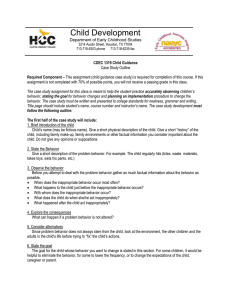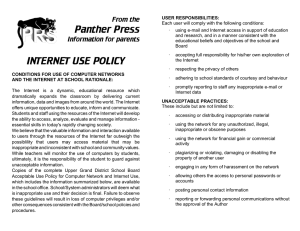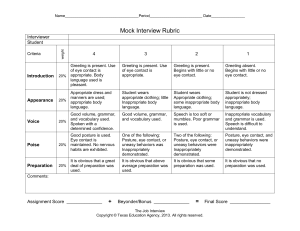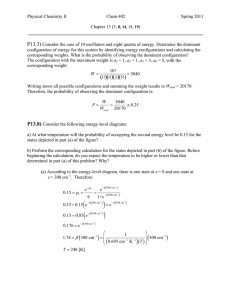CDEC 1319 case study 2015 - Guidelines.doc
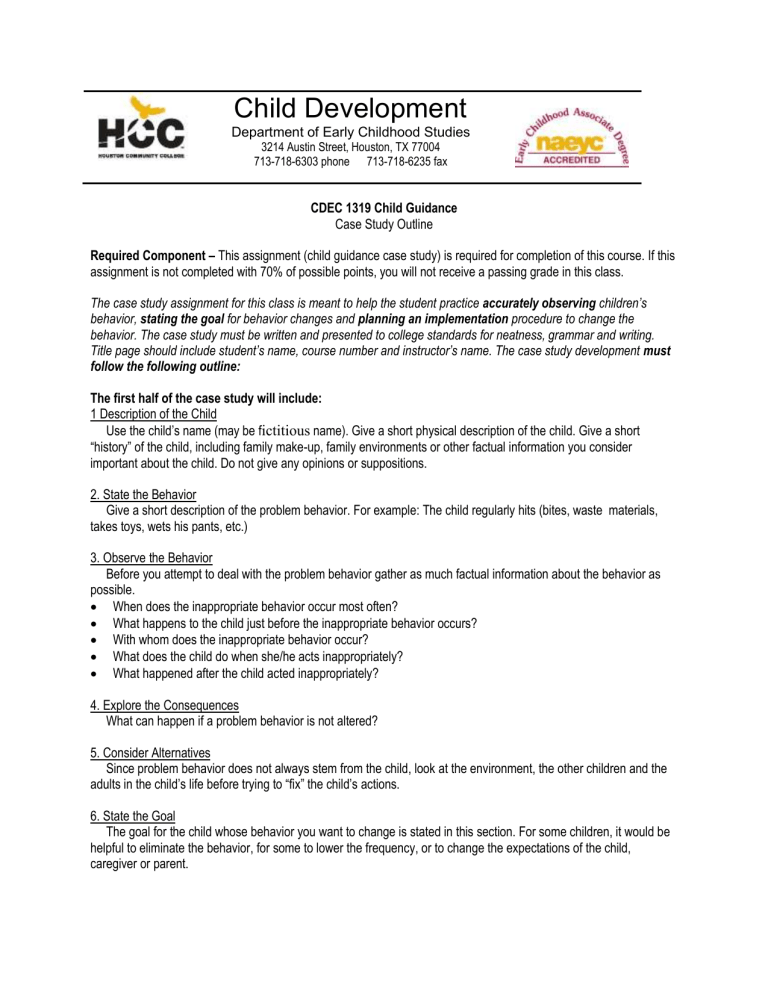
Child Development
Department of Early Childhood Studies
3214 Austin Street, Houston, TX 77004
713-718-6303 phone 713-718-6235 fax
CDEC 1319 Child Guidance
Case Study Outline
Required Component – This assignment (child guidance case study) is required for completion of this course. If this assignment is not completed with 70% of possible points, you will not receive a passing grade in this class.
The case study assignment for this class is meant to help the student practice accurately observing children’s behavior, stating the goal for behavior changes and planning an implementation procedure to change the behavior. The case study must be written and presented to college standards for neatness, grammar and writing.
Title page should include student’s name, course number and instructor’s name. The case study development must follow the following outline:
The first half of the case study will include:
1 Description of the Child
Use the child’s name (may be f
ictitious
name). Give a short physical description of the child. Give a short
“history” of the child, including family make-up, family environments or other factual information you consider important about the child. Do not give any opinions or suppositions.
2. State the Behavior
Give a short description of the problem behavior. For example: The child regularly hits (bites, waste materials, takes toys, wets his pants, etc.)
3. Observe the Behavior
Before you attempt to deal with the problem behavior gather as much factual information about the behavior as possible.
When does the inappropriate behavior occur most often?
What happens to the child just before the inappropriate behavior occurs?
With whom does the inappropriate behavior occur?
What does the child do when she/he acts inappropriately?
What happened after the child acted inappropriately?
4. Explore the Consequences
What can happen if a problem behavior is not altered?
5. Consider Alternatives
Since problem behavior does not always stem from the child, look at the environment, the other children and the adults in the child’s life before trying to “fix” the child’s actions.
6. State the Goal
The goal for the child whose behavior you want to change is stated in this section. For some children, it would be helpful to eliminate the behavior, for some to lower the frequency, or to change the expectations of the child, caregiver or parent.
CDEC 1319 case study – page 2
The second half of the case study will present a step by step method for changing the specific behavior.
1. Definition
Give a concise definition of the behavior to be changed.
2. Baseline
Take a baseline of the frequency of behavior with which to compare later changes. Do this over at least a three day period.
3. Program
Develop a program where several consecutive steps or simultaneous procedures are outlined. You might ignore the behavior, offer a reward for non-compatible behavior, institute a brief “time out”, or have the child help in determining the consequences
4. Maintenance
Once a goal is reach, it is important to maintain it, Give suggestions to help you keep the appropriate behavior and avoid a setback.
5. Graph Behavior
Keep a graph of the daily behavior. Often the behavior is heightened at first and then diminishes.
You may use pictures if you’d like, making sure you keep the confidentiality of the child and his family.
Revision – August 2010
